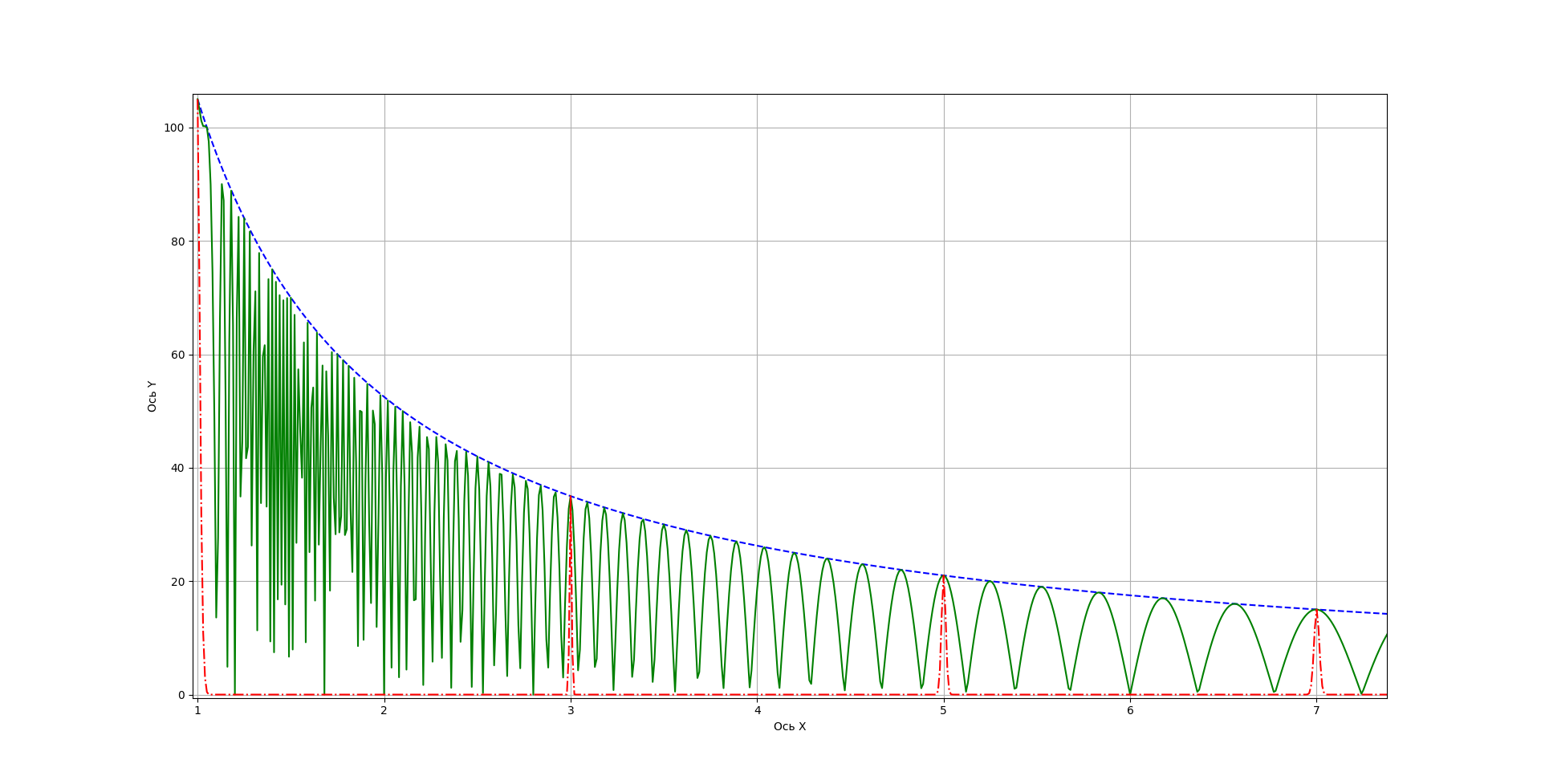Let's take a hyperbola of the form:
Here n is an odd number, the divisors of which must be found. Multiply f (x) by cos [π⋅f (x)] (note - the brackets () and [] are equivalent and do not add additional meanings). And take the module of the resulting function g (x):
The graphs f (x) and | g (x) | are shown in Fig. 1. n is taken equal to 15. And this is one of the main drawbacks of the method, for large values of n the argument of the cosine changes with a very high frequency.
![Figure 1 - Graph of functions f (x) = 35 / x and | g (x) | = | f (x) ⋅cos [π⋅f (x)] | Figure 1 - Graph of functions f (x) = 35 / x and | g (x) | = | f (x) ⋅cos [π⋅f (x)] |](https://habrastorage.org/getpro/habr/upload_files/e43/ea9/d01/e43ea9d01ef16cf978bee48e69743f1b.png)
, , 2 .
![Figure 2 - Graph of the function f (x) ⋅cos [π⋅f (x)] ^ 10 Figure 2 - Graph of the function f (x) ⋅cos [π⋅f (x)] ^ 10](https://habrastorage.org/getpro/habr/upload_files/dfb/b26/ee0/dfbb26ee0a865751b569026b90cd015a.png)
"" (. . 3) (.. g(x)) [sin(π⋅x/2)⋅sin(3π⋅x/2)⋅sin(5π⋅x/2)⋅sin(7π⋅x/2)]^20.
n. 1, 3, 5, 15.
![Figure 3 - Filtering f (x) ⋅cos [π⋅f (x)] ^ 10 using sin (π⋅n⋅x / 2) Figure 3 - Filtering f (x) ⋅cos [π⋅f (x)] ^ 10 using sin (π⋅n⋅x / 2)](https://habrastorage.org/getpro/habr/upload_files/003/b37/2be/003b372beb393480a1b8cb6f6a6b9c2c.png)
n=105, 4, 5 1, 3, 5, 7, 15, 21, 35. 105 .


"" , .
.. , p-V-T , . . 6 10.

(-cos[π⋅f(x)]) :
1 n Nn=(n-1)/2
N x Nx=n⋅(x-1)/2⋅x
The x coordinate of the Nth period is calculated by the formula x N = n / (n-2⋅N)
The ratio of the coordinate value x N + 1 to x N : x N + 1 / x N = 1 + 2 / (n-2⋅N)
If you imagine a number large enough n as the product of P (1 + 2 / (n-2⋅N)) from 1 to N n , the first ≈63.2% of the terms in the product will give the number e.